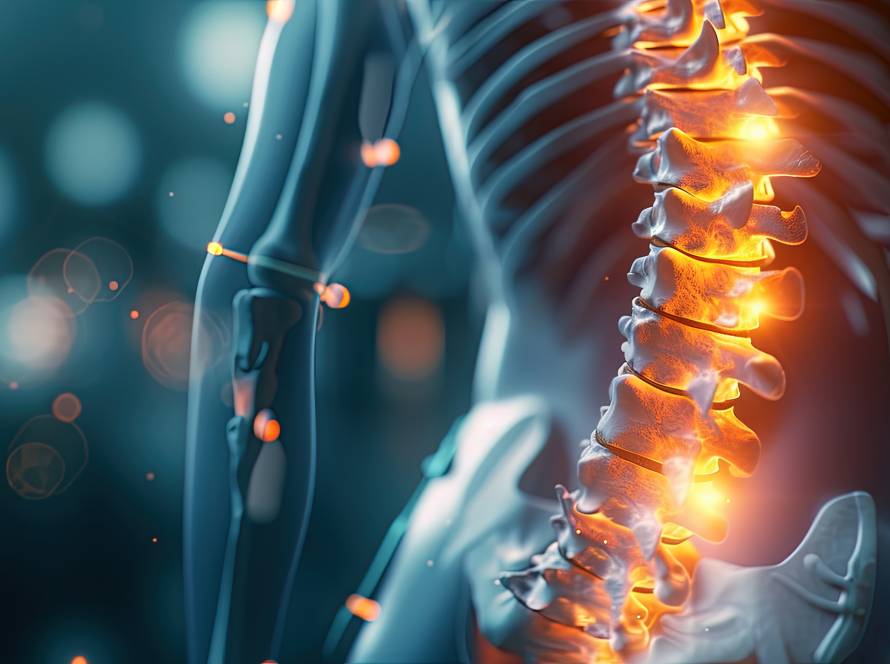
Most people experience back pain at some point in their lives. It’s easy to shrug it off, assuming it will fade away with time or rest. While that may be true in some cases, not all instances of back pain should be taken lightly.
Sometimes, persistent or severe pain in the spine could signal a more serious condition. But how can you distinguish between a minor ache and a potential warning sign that requires spine pain treatment in Singapore?
Understanding the possible causes of your back pain is the first step in determining whether it requires immediate treatment.
Underlying conditions
The following are common conditions associated with spine pain and some of the symptoms they present.
Arthritis
Arthritis causes inflammation in the joints, and it can significantly affect the spine. Osteoarthritis, the most common form, involves the wear and tear of the cartilage that buffers the joints, leading to pain, stiffness, and swelling.
Arthritis can cause chronic back pain, especially in the lower back, when it affects the spine. Rheumatoid arthritis, an autoimmune disorder, can also affect the spine, causing pain and deformity over time.
Degenerative Disc Disease
Degenerative disc disease (DDD) is a condition where the discs between the vertebrae wear with age. This degeneration can lead to chronic back pain, especially in the lower back and neck.
The pain usually worsens with activities like bending, lifting, or twisting. In severe cases, degenerative disc disease can cause herniated discs, which can press on nerves and lead to pain radiating down the legs.
Spinal Stenosis
Spinal stenosis happens when the spaces within the spine narrow, pressing on the nerves that travel through the spine. This condition is often a result of ageing and can present back pain, numbness, tingling, and weakness in the legs.
The pain from spinal stenosis often intensifies with standing or walking, but is relieved by sitting or leaning forward. Surgery may be necessary for severe cases of spinal stenosis where symptoms significantly impact daily life.
Ankylosing Spondylitis
Ankylosing spondylitis is inflammatory arthritis of the spine. It causes chronic pain and stiffness. Over time, the inflammation can cause fusing of the vertebrae, resulting in a rigid spine.
This condition often starts in early adulthood and may be accompanied by pain in the lower back and hips, especially after periods of being inactive. If left untreated, ankylosing spondylitis can advance and lead to severe deformity and disability.
Infections
Spinal infections, such as vertebral osteomyelitis, discitis, or epidural abscesses, are serious conditions that require immediate medical attention. They can cause severe back pain, fever, and a general feeling of being unwell.
If the infection spreads to the spinal cord, the sufferer may also experience neurological symptoms. As such early treatment is crucial to prevent worsening outcomes.
Tumours
Tumours in or around the spine are rare but serious causes of back pain. These can be primary tumours originating in the spine or metastatic tumours that have spread from other parts of the body. Tumours can compress the spinal cord or nerves, leading to pain, weakness, and other neurological symptoms.
Back pain caused by tumours is usually persistent and does not improve with rest. It may also be associated with unexplained weight loss, fatigue, and other systemic symptoms.
Treatment options for back pain
Conservative methods are often the first line of defence in treating back pain. These may include:
- Physical therapy: Building strength in the muscles that support the spine can help ease pain and improve mobility.
- Medications: Anti-inflammatory drugs, muscle relaxants, and pain relievers can help manage symptoms.
- Injections: Corticosteroid injections will reduce inflammation and pain in specific areas.
- Lifestyle modifications: Maintaining a healthy weight, practicing good posture, and staying away from activities that strain the back can help prevent further pain.
Surgical intervention may be necessary if the conditions are more advanced and severe. Surgery may involve removing part of a damaged disc, decompressing a nerve, or stabilising the spine. A spine specialist can point you to the best treatment plan based on your condition.
Physical therapy
Medications
Injections
Lifestyle modifications
When Should I See A Spine Specialist?
While back pain is common, certain symptoms warrant immediate medical attention. If you experience any of the following, consult a back and spine specialist as soon as possible:
- Severe pain: Intense, unrelenting back pain that does not improve with rest or over-the-counter medications.
- Pain radiating down the legs (sciatica): If your back pain presents with numbness or tingling that extends to one or both legs.
- Fever: A high temperature combined with back pain could indicate a spine infection that needs prompt treatment.
- Unexplained weight loss or fatigue: These symptoms and persistent back pain could indicate a tumour or other serious condition.
Severe pain
Pain radiating down the legs (sciatica)
Fever
Unexplained weight loss or fatigue
Seeking Relief for Your Spine Pain?
If you’re struggling with back pain and suspect an underlying condition is behind it, don’t hesitate to schedule a consultation with us. Early diagnosis and treatment can better your chances of a full recovery.
At Achieve Spine and Orthopaedic Centre, our experienced spine specialist provide personalised care for various spinal conditions. We are experienced with performing a myriad of spine surgery, specialising in minimally invasive spine surgery, so that patients can recover quicker with smaller incisions.



